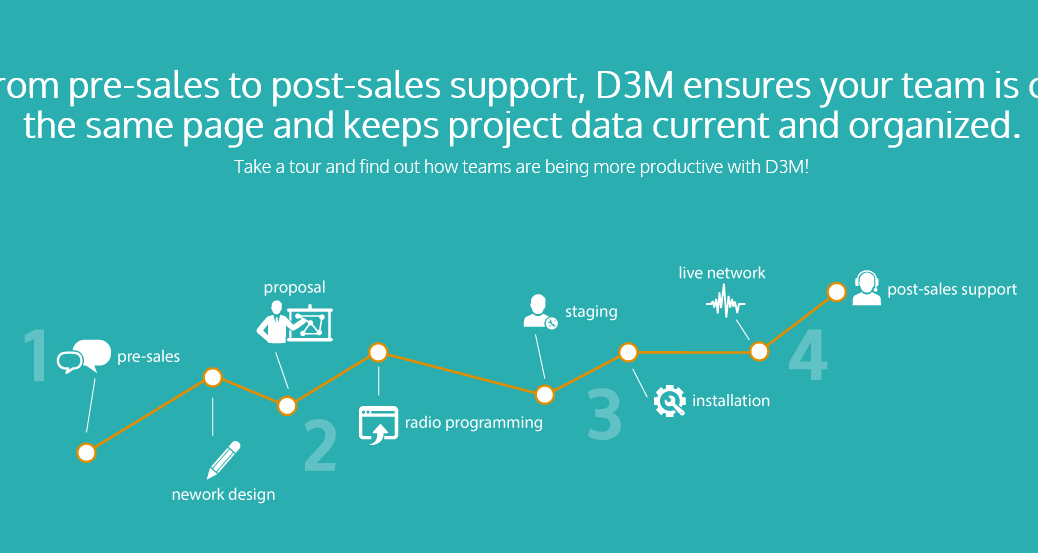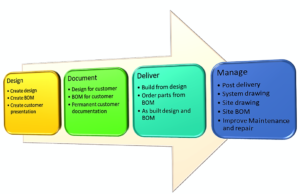Podcast: Play in new window | Download | Embed
Subscribe: Apple Podcasts | RSS
You have all heard about the race for #3 and the drop to #4. T-Mobile is the solid #3 while Sprint is the solid #4. T-Mobile seems to be heading forward while Sprint seems to be falling hard. Sprint has so much debt while T-Mobile is building the dense network that Sprint talked about. You know about the race, but let’s look at how they got here and where they appear to be headed. Not only in coverage and the network, but in general.
Sprint cried WOLF one too many times!
 First, you have Sprint, who is the carrier who cried wolf only to sit back and do nothing. By wolf, I mean Next Generation Network, (NGN)! Here was their chance to build the new network that would be the building block for LTE with an amazing LTE backbone that would deploy a mix of small cells and smaller macro sites to densify coverage. Then it was called the densification project, where they would put smaller sites everywhere. While they are working on this to put sites closer to the people, it has less to do with technology and more to do with getting off towers to save money.
First, you have Sprint, who is the carrier who cried wolf only to sit back and do nothing. By wolf, I mean Next Generation Network, (NGN)! Here was their chance to build the new network that would be the building block for LTE with an amazing LTE backbone that would deploy a mix of small cells and smaller macro sites to densify coverage. Then it was called the densification project, where they would put smaller sites everywhere. While they are working on this to put sites closer to the people, it has less to do with technology and more to do with getting off towers to save money.
Maybe by wolf you thought it was the 70,000 small cell roll-out, again, another made up story to drive prices down so that they can save money on those few hundred deployments. Then the partnership with Mobilitie to roll out sites in Right of Way, (ROW), as a CLEC, (Competitive Local Exchange Carrier), a lot like Softbank did in Japan. How is that going? I hear not so well and slow. If anything, it set the rest of the carriers back on any deployments as municipalities appear to be very angry. So angry that they’re changing the rules where they can so it can’t happen again. It seems like Sprint is running with scissors and falling repeatedly. They create quite a buzz! However, I feel like they rev the engine to impress everyone at the starting line, but when it comes time to race, they put it in gear and the car stalls, going nowhere. Maybe they are looking at it like a marathon, thinking they have more time, but do they?
I will give Sprint credit for creativity. They still seem to be determined to get out of as many large tower company leases that they can with the densification deployment where they will install poles in “Right of Way” areas. We’ll see what happens but the tower owners don’t appear to be worried. I would guess because they have those iron-clad leases to hold Sprint in for 8 to 10 years. Let’s face it, they are in no hurry. Good thing for Sprint the rest of the carriers see that it actually is a good idea to lower lease rates. I already hear AT&T and Verizon are looking into lease reduction. Not good for American Tower, Crown Castle, and SBC. However, it’s hard to leave the big tower boys for 3 reasons: 1) iron clad 10 year leases with no out clause, 2) they bought all of the carriers towers and own many more, 3) where else will the carriers go. Let’s face it, townships, cities, and municipalities made it easy for the large tower companies to take over with all the restrictions on new towers, but I digress, let’s get back on topic.
Sprint has real problems, which Bloomberg lays out, that means heavy debt. So what is Softbank doing? Maybe they want Sprint to figure it out themselves, perhaps because they could not buy T-Mobile, or may Sprint was in worse shape than expected. Maybe they plan to let Sprint o go into bankruptcy to rebuild, which I hope never happens. I give them credit, they did a lot of creative financing to get by this year’s (2016) debt, which looks to be $4B, yes, four billion dollars. If Marcelo Claure can pull this off, then he deserves a bonus, of course there won’t be one because it went to pay the debt, am I right? Congratulations to Sprint, they may be #4 in the network, reliability, and coverage, but they are #1 in debt, that’s a reason to celebrate, right, #1 in something!
This is a carrier who appears to be on the decline, no matter how cheap they sell airtime they just can’t catch up. It is going to be hard to catch up with no money and running the network on a shoestring budget. I know I sound negative hear, but I really hope Sprint turns it around for the sake of the industry. Hey, they could become a paging company, they can run the network much more cost effectively that this LTE network, just a thought. They have plenty of 2.5GHz spectrum which they need to roll out and make money on, if not in their network, then lease it or sell it, let’s see it work for you, not flounder.
I will give Sprint credit, they are doing all that they can with what they have. However, the limitations that are holding them back will cost them more money in the near future. They are slow, if not last, to move to VoLTE, that means that they need to maintain the CDMA network past 2020, which will cost them more money to run a network that is more expensive to maintain and may be “end of life”, (EOL), by 2020 if not before. It costs more money to maintain multiple technologies, especially end of life technologies. CDMA specifically because the equipment is usually made specific to each carrier, it’s hard to buy equipment like that off of Ebay!
What about T-Mobile?
Then you have T-Mobile, who not only is investing, and improving the network but they are also becoming a threat to #2 in an amazing way. They are pushing out LTE and improving speeds and they have an amazing marketing machine. If they could tap dance then they would be a triple threat! I am sure Legere can dance, but he is waiting for the right time, like when they pass AT&T to become #2.
Newsletter sign-up!
Subscribe–> iTunes or Stitcher or Overcast
Here is where that company not only put their money where John Legere’s mouth was, they showed up to the party with results! You heard me, they have an amazing marketing  machine that pushed their message in your face they offered no contracts, they gave you a great price and some free”Binge-On” data. Then what did they do? They kicked the LTE deployment into high gear and pushed great performing LTE out to the public for their customers to see what a real network can do. They didn’t just upgrade their home city, like Sprint did in Kansas City, T-Mobile
machine that pushed their message in your face they offered no contracts, they gave you a great price and some free”Binge-On” data. Then what did they do? They kicked the LTE deployment into high gear and pushed great performing LTE out to the public for their customers to see what a real network can do. They didn’t just upgrade their home city, like Sprint did in Kansas City, T-Mobile 
Let’s not forget that T-Mobile was the first to really push Wi-Fi voice calls, and they made it work. The found ways to improve the in-home coverage with their Femto cells that they handed out to customers. They constantly look for ways to improve the network. Now, they do it as cheap as they can, they aren’t going to pay top dollar if they don’t have to, but they are continuing to make the push. While they don’t like the DAS model, they will live with it if they have to. You see, they realize that bandwidth and coverage are important. They don’t seem to be in a hurry to build out the rural areas yet, I guess they don’t see a big pay back at this time.
 The Wireless Deployment Handbook eBook that covers professional carrier end to end deployment of LTE small cells, CRAN, and DAS showing you the proper way to plan for deployment then execute.
The Wireless Deployment Handbook eBook that covers professional carrier end to end deployment of LTE small cells, CRAN, and DAS showing you the proper way to plan for deployment then execute.
If T-Mobile can come from #4 with such a push that they can become #3, why can’t they become #2? This is the perfect time to do it because AT&T seems more worried about their DirecTV purchase than they do about improving the network on a nationwide basis. That’s OK, they figure their good enough and will probably maintain the LTE network until 5G comes out. I am thinking that T-Mobile could push for #2, but they would have to build more rural sites. I am not sure what their goal is right now except to improve the network and have bragging rights on speed. Maybe that is enough, to make Verizon look over their shoulder and to catch AT&T watching TV while T-Mobile pushed ahead quickly and impressively.
TOWER CLIMBING: AN INTRODUCTION (The book about getting started as a tower climber)
So let me know what you think, email wade4wireless@gmail.com when you think of something to say!
T-Mobile wants to sunset 3G quickly, they want VoLTE to be the voice of choice, they want data to rule. They understand how expensive it is to maintain legacy hardware and a legacy network that will soon be EOL. The sooner they can be all LTE, they can shut down the 2G and 3G networks, then they will be saving more money.I would bet Sprint engineers want to do this, but budgets won’t allow it so they still deploying 3G. That is my opinion. 3G vendors will capitalize on maintaining older products like they have done in the past.
You may think that I favor T-Mobile, but the facts are the facts. T-Mobile is moving ahead and making things happen. They are improving and they make good decisions. I wish them well and I hope they make a serious run for #2. It appears that with Legere at the helm, that may be possible.
To sum it up:
I actually thought Sprint was going to build the NGN network. I thought that they would move ahead and be a leader in the industry. Look how wrong I was! T-Mobile is really the carrier to watch, they really want the #1 spot which is giving them the momentum to push into #2. I hope they can do it because we all love the underdog, right? Their timing is great because they are catching AT&T watching TV instead of the wireless network and the only money Sprint is spending is on new commercials. Another thing to give T-Mobile is that they know how to make viral videos, which is free advertising, again, Legere’s marketing is amazing. I am becoming a fan of this guy.
Good luck T-Mobile, this industry needs a good shake up. You passed Sprint with flying colors, now it’s time for a real test. Can you do it? Can you spearhead right through AT&T into the #2 position? I don’t know but I am rooting for you to push them hard. Good luck!
Be smart, be safe, and pay attention!
Do you know what to put in your SOW, the details needed to get paid for milestones or job completion? Would it hold up in claims court? Would you rather plan up front instead of fighting for it after the job is done?

























